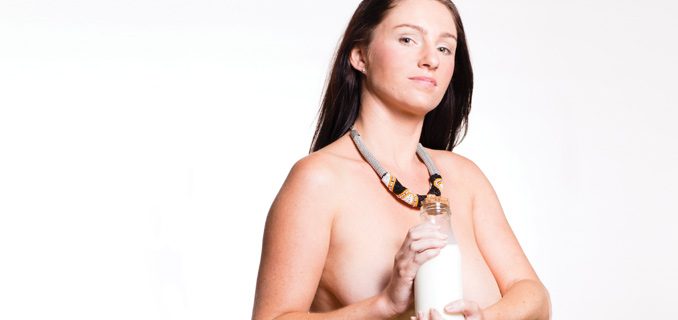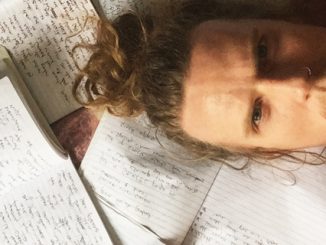
Maani Truu meets three Sydney mums who have united online in their search for child rearing’s ‘liquid gold’.
If someone has too much of something and someone else doesn’t have enough, it seems like a simple solution to pass the excess along. But when talking about breast milk, not everyone is on board. Then there are those who take matters into their own hands, the mums worldwide sharing their milk through online communities that put mothers in contact with parents in need.
One such community used by Inner West mums is the New South Wales page of Human Milk for Human Babies (HM4HB). A global operation, HM4HB operates via localised Facebook pages, where anyone can post as either a donor or recipient, allowing members who can help to connect with those in need, dependent on their location. While there is no template for posting, typically it will include information as to whether they have milk to donate or are seeking milk, their location, how much milk they have to donate and often provisos such as; “non-smoker”, “non-drinker” and “healthy diet”.
HM4HB is not the only exchange of its kind.
There are five breast milk banks in Australia. Our local bank (and the only one in NSW) is located at RPA, but like other hospital-based banks, it is only equipped to provide milk to critically ill babies in the hospital. All the other banks operate in this way, except for one charity organisation, Mother’s Milk Bank. While it is illegal to sell human body products in Australia, Mother’s Milk Bank offers milk to anyone for a ten dollar “donation” per bottle.
Birchgrove mum and user of HM4HB, Terri, says that considering her daughter Lena needs roughly six bottles a day, this price is “completely unsustainable”.
The demand for natural breast milk, along with the prohibitive costs of public milk banks, has led to online networks developing to meet the needs of mothers. One way milk banks differ from online networks such as HM4HB is that the milk in banks is processed and the donor screened through a formal process. In the same way that cow’s milk is treated, bank breast milk is pasteurised and homogenised to kill bacteria.
It is for this reason that many mothers believe peer-to-peer networks are a superior source of breast milk than banks.
“I can understand why they do that from a health perspective,” says Amber, who donates her own milk in the HM4HB network.
“When you pasteurise breast milk you kill a lot of the white blood cells and antibodies and for some people that is part of the reason why they are looking for breast milk. We probably don’t need to muck around with it so much.”
Women are not always involved in milk-sharing communities out of feelings of necessity. As Daina, another breast milk recipient and user of HM4HB, puts it, “Formula is a substitute that is always available to women and is fine to use but I think there are a lot of health benefits for a newborn baby to be breast fed, whenever possible.”
There is a firm belief within the milk-sharing community that “breast is best” and when faced with the inability to provide breast milk for their child, someone else’s breast milk is the next best option. The World Health Organisation seconds this opinion. Its guidelines state “breast milk from a healthy wet-nurse or human-milk bank” as the next best option when traditional breastfeeding isn’t available. Of course, emphasis is placed on a “healthy” donor. This is one criticism made by opponents of milk sharing – that a “healthy” donor cannot be guaranteed by informal groups.
Speaking to donors and recipients part of HM4HB, they all agree that the risk of receiving tarnished or infectious milk is significantly reduced when you remember the demographic of the donors: breastfeeding mothers, who are also feeding their own children with the same milk.
“These are mothers who have recently given birth and are altruistic enough to find someone to donate their milk to. Those people by nature are responsible,” says Terri.
And there is no financial gain in being a donor.
Speaking to Amber about her reasons for donating, she says it was an easy decision. “I’m a blood donor and I’m an egg donor, it just made sense to me. If you can give something without it having a detrimental effect on you – why not?” Amber says. At one point she was producing over two litres of milk a day, with the only alternative to donating pouring the excess down the sink.
While peer-to-peer networks have improved the situation for mothers in need of donor breast milk, Daina and Terri believe greater awareness about the possibility of milk sharing would improve both supply and demand.
“We need more knowledge about how you can safely donate and more people to be aware that you don’t have to throw that milk out,” says Terri. “Also, I would love to see free screening for women who wish to donate.”
Both mothers express concerns about establishing more milk banks, as they would require funding, and with the costs involved, the practice could quickly become prohibitively expensive. In addition, a focus on formal methods of donations may detract from the number of donors turning to informal groups like HM4HB.
“What donors (to banks) are missing out on is the fact that a person is going to have to pay for that milk, so you are basically giving away your product and the banks are going to make money off it,” Terri says. “HM4HB is a community-based approach to child rearing that has existed for centuries. It’s just bringing it into this age, where we are using social media to connect with people,” she says.
With such a long history, it should be questioned why the practice of sharing milk carries such a strong social stigma now. One argument could be that there is no economic benefit to community based milk sharing. Another may be the taboo of the non-sexual female body, which already pervades discussion of breastfeeding in general.
“It’s unfortunate that over time we have lost that sense of community in regards to breast milk sharing,” Daina says.
The stigma against sharing milk seemed particularly misplaced when I discovered that breast milk is used for a number of purposes.
Amber’s journey into milk donation actually begun when her sister-in-law was diagnosed with Hodgkins Lymphoma and her oncologist recommended drinking colostrum to help boost her immune system. Colostrum is the first few mils of breast milk produced with significanty higher levels of antibodies and protein. It is often a golden colour, lending it the nickname ‘liquid gold’.
“Everyday I would pump about 20 milligrams of colostrum,” Amber recalls, “and my sister-in-law would come over and have a cup of Rooibos tea with a splash of rice milk and colostrum.”
With so many benefits it is clear why recipients perceive breast milk as ‘liquid gold’ and donors are eager to ensure it doesn’t go to waste. What is striking about the NSW chapter of HM4HB is the overwhelming sense of support and community between members. It is common to see statuses on the HM4HB Facebook page from women jumping at the chance to ensure someone else’s baby has enough milk.
“It’s all about community,” says Terri. “It’s community building. Women helping fellow women.”
Words by Maani Truu
*Note: some names have been changed.
Local Breastfeeding Information and Support
Leichhardt Early Childhood Health Centre
Hosts Breast Feeding Support Clinics.
Piazza Level, Italian Forum, 23 Norton Street, Leichhardt
Ph: 9562 5400
Australian Breastfeeding Association, Marrickville
Meets for fortnightly discussions during school term.
For information visit: www.breastfeeding.asn.au/local/nsw/marrickville-nsw
RPA Early Childhood
Lactation Clinic
Missenden Road, Camperdown
Ph: 9515 8422

